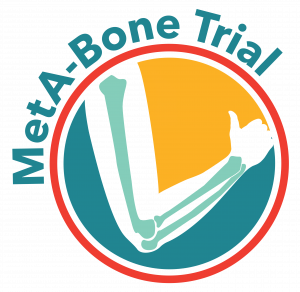Written by Yaisli Lorenzo, MS, RDN
Bones are more important than you think! Bones provide a strong frame for your body, protect organs, and provide storage for many essential nutrients.1 Everyone can benefit from eating a variety of food to promote healthier bones. Having adequate bone mass is critical to reduce the risk of bone disorders, like osteoporosis, and reduce fractures.2 Nutrition is an important factor that can impact bones.3
Calcium is the main mineral in the bones. There are many calcium-rich foods, such as cheese, yogurt, kale, canned fish, soy products like edamame and tofu, and cow milk and fortified beverages like soymilk. It is best to split your calcium intake throughout the day since eating high amounts of calcium in one sitting will reduce the amount the body can absorb. Try including a calcium-rich source with every meal! 4
Vitamin C helps make bone-forming cells in the body. Some excellent vitamin C sources are peppers of any color and any kind, parsley, kale, kiwifruit, broccoli, brussels sprouts, all citrus fruits, papayas, and strawberries.5 Vitamin D helps the body absorb calcium better. Getting sun exposure can help the body obtain vitamin D. However, you can also eat foods with vitamin D such as fatty fish (salmon, sardines, and tuna), liver, egg yolks, and fortified foods like cow milk, soymilk, and cheese.4
Vitamin K helps bone-forming proteins bind to minerals, like calcium, and prevent them from leaving the bones. Vitamin K sources are leafy greens, green vegetables, natto, liver, egg yolks, and sauerkraut.6 Magnesium helps activate vitamin D, and as we know, vitamin D also helps absorb calcium. Great sources include 70% or more of dark chocolate, avocado, nuts, legumes, seeds, fatty fish, and leafy greens.7 Zinc also helps create bone-building cells and prevents the breakdown of bone. Zinc sources are meats, seafood like shrimp, legumes, nuts, and dairy sources.8
It is important to eat a diet that offers variety as different foods supply different nutrients. Avoid focusing on one nutrient but instead, focus on eating different food groups throughout the day.
Sources:
- Su N, Yang J, Xie Y, et al. Bone function, dysfunction and its role in diseases including critical illness. Int J Biol Sci. 2019;15(4):776-787. Published 2019 Jan 29. doi:10.7150/ijbs.27063
- Weaver, C.M., Gordon, C.M., Janz, K.F. et al. The National Osteoporosis Foundation’s position statement on peak bone mass development and lifestyle factors: a systematic review and implementation recommendations. Osteoporos Int 27, 1281–1386 (2016). https://doi.org/10.1007/s00198-015-3440-3
- Surdykowski AK, Kenny AM, Insogna KL, Kerstetter JE. Optimizing bone health in older adults: the importance of dietary protein. Aging health. 2010;6(3):345-357. doi:10.2217/ahe.10.16
- Moyer VA; US Preventive Services Task Force. Vitamin D and calcium supplementation to prevent fractures in adults: US Preventive Services Task Force recommendation statement. Ann Intern Med. 2013;158(9):691-696. PMID: 23440163 www.ncbi.nlm.nih.gov/pubmed/23440163
- Aghajanian P, Hall S, Wongworawat MD, Mohan S. The Roles and Mechanisms of Actions of Vitamin C in Bone: New Developments. J Bone Miner Res. 2015;30(11):1945-1955. doi:10.1002/jbmr.2709
- Fusaro M, Mereu MC, Aghi A, Iervasi G, Gallieni M. Vitamin K and bone. Clin Cases Miner Bone Metab. 2017;14(2):200-206. doi:10.11138/ccmbm/2017.14.1.200
- Castiglioni S, Cazzaniga A, Albisetti W, Maier JA. Magnesium and osteoporosis: current state of knowledge and future research directions. Nutrients. 2013;5(8):3022-3033. Published 2013 Jul 31. doi:10.3390/nu5083022



